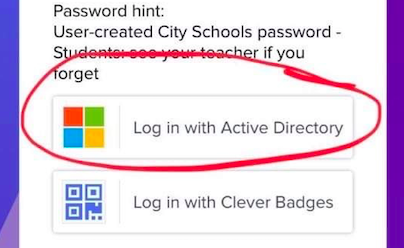Throughout the pandemic, numerous districts and communities have looked for ways to expand technology access for all students, including English language learners (ELLs) and immigrant families.
Now that many schools are returning to remote learning for periods of time during the Omicron surge, that access remains critical. Here are some helpful tips and lessons learned from prior periods of the pandemic that can help ensure that students have the devices and Internet connections they need.
Special thanks to educators who have provided feedback through surveys and social media, as well as to the staff of Wolfe Street Academy, a community school in Baltimore, MD, for great insights!
The Digital Divide Continues
The COVID-19 pandemic has made a signficiant dent in the digital divide (an issue of concern for ELL educators for many years), increasing families' access to devices, computers, and Internet service in many places in the country.
Yet even with the progress made during the pandemic, deep disparities and inequities still persist, according to Vikki Katz, a communication professor at Rutgers University. In an Associated Press article about the digital divide during the Omicron surge, Katz notes that for families who are "underconnected" and have sporadic Internet access, it is challenging for students to jump back into remote learning with little notice.
In addition, a focus on sustaining in-person learning this year may mean that in some schools:
- students do not have access to a personal device as they did previously
- programs meant to support remote learning and Internet access have ended.
Family Communication and Partnerships
Partnering with multilingual families during the Omicron surge
Learn how schools can include multilingual families in their response plans to the Omicron variant and COVID-19 surges in their communities.
In order to improve students' technology access, there are a few areas in which schools can focus. The first, which educators have pointed to again and again during the pandemic, is strong relationships with families since ongoing communication is so critical to navigating these uncertain times.
Tips for schools
- Families have a legal right to information from the school in their home language.
- Learning more about how and when families prefer to communicate can make a significant difference in family engagement. For example, some districts have had success with texting apps such as Whatsapp and Talking Points, as well multilingual groups on Facebook. Many families also have strong networks amongst themselves that include texting groups, social media groups, and phone trees.
- Keeping in communication with students and families about what's working (or not) will help schools figure out where to focus their efforts.
- Educators who partner with families frequently, including ELL and bilingual educators, interpreters, and family liaisons, will have valuable tips and recommendations. These educators may also be part of professional networks where they can learn what is working in other districts.
- Sharing family surveys via phone or text — and in families' languages — will likely yield more information than posting surveys online, especially if the surveys are not translated.
- Newcomer families, such as Afghan families who have come during this school year, will need additional information since they did not experience remote learning in the previous school year.
Finally, it is important not to make assumptions. Many immigrant families may use technology to help with their international communication, and some ELLs are so advanced that they provide technical support for other students and their teachers! Students may also be quite familiar with one kind of digital tool, like apps, but not others.
Access to Devices
ELL educators have shared the following insights about their students' access to technology during the pandemic:
- In many ELL families, multiple siblings shared devices for their schoolwork.
- Students without devices may used cell phones to complete assignments.
- Some families did not know that devices were available from their district, and they did not find out about these options in time to get a device.
- Educators heard from families who were reluctant to take a device home due to concern about damaging the device.
- Immigrant families may have been concerned that using a device provided by the school would impact their immigration cases if using the device was considered a social "benefit."
Tips for schools
- Schools and districts may wish to start with a needs assessment and talk with families about their child's access to a device for schoolwork.
- It is important for educators to be on the lookout for students who:
- do not have a device
- plan on sharing a device with a sibling
- plan on using a cell phone to complete schoolwork.
- If you do identify students who don't have a device for schoolwork, talk with an administrator about whether there are options to fill this gap. In addition to any district programs or grants to expand technology access, local community partners, businesses, or individuals may be able to contribute to a technology fund.
- Districts may also wish to consider programs that offer a device as part of a digital literacy course so that families learn important technical skills, such as this program in Boulder, CO.
- In addition, schools should not assume that educators have devices or internet access at home.
Internet Access
Even if all students have a device, access to reliable Internet connections may prove to be another obstacle in distance learning.
Here are some of the situations that educators of ELLs have shared with us during the pandemic:
- If internet companies required a social security number and no "past due" bills to register for free access, this deterred some families from signing up.
- Information about internet access was not available in families' home languages, or it was too confusing.
- Families lived in residences whose address was not recognized by the internet company.
- If multiple families were sharing a residence, there were cases in which the internet company only allowed one registration per address, leaving other families in the residence without an option of setting up their own connection.
- Students in more rural areas were not be able to get a signal even with reliable internet providers and routers.
- Some families did not have electricity at home, as in the case of migrant farmworkers living in temporary housing or trailers.
- Some families were afraid to sign up due to their immigration status.
Tips for schools
In order to overcome these challenges, schools and districts tried some creative solutions, such as:
- providing devices with data, where students could connect anywhere and anytime
- offering hot spots, including on buses that would travel to neighborhoods where internet access was an issue
- offering free wi-fi at the school (or partnering with another institution in the community to provide wi-fi) that families could access from the parking lot to download relevant information
- partnering with municipal governments, internet providers, and cell phone companies to expand access.
There is no "one-size-fits-all" solution to this challenge, which is why understanding your families' circumstances will lead to a better solution for your students and educators.
Tech Support and Training

Once students have devices and data, there is still another key step needed to ensure students can successfully use their distance learning platforms — training and tech support. Many English-speaking families described being overwhelmed by the number of platforms and log-ins needed for their child or children to complete schoolwork.
You can imagine what that challenge was like for ELL students and families who were often navigating new platforms and trying to get their technical questions answered.
Tips for schools
Multilingual tutorials
To increase student success, schools and districts might consider offering translated student and family tutorials about the platforms they will be using. Some platforms have translated tutorials available, or districts have created their own.
For example, Hartford Public Schools shares this Google Classroom tutorial in Spanish on their website and the New York City Department of Education has a collection of multilingual Google Classroom tutorials available on YouTube.
Providing technical support
In order to identify key needs and priorities around tech support, you may wish to ask families about the challenges they have had with technology during the pandemic.
In addition, the following steps can improve technical support for multilingual families:
- providing a translated form where families can keep track of their child's log-in info and any family log-in info they need
- providing "how-to" instructions through short videos or screen shots with highlights or arrows (which can be added through "markup" features on smart phones)
- ensuring that families have a way to ask questions related to tech support with the assistance of an interpreter
- setting up a process for collaboration and communication among educators, interpreters/family liaisons, and tech support staff
- providing training for families on how to use their device or platforms to support learning.
Protecting Student Privacy
It is critical to keep in mind that privacy concerns may be particularly complex for families of English learners and immigrant students. At the same time, families who are using internet and wi-fi at home for the first time may need additional information about how to protect their privacy.
Your district may have policies in place regarding student privacy and online learning. For example, some districts restrict the use of videos of students. Check with your school administrator for clarification as needed and also to share appropriate information with families on protecting their privacy in their home language.
Offline Instruction at Home
Finally, there are numerous resources for helping to support instruction at home when technology access is not available (or to complement online learning). You will find many of these resources and activity ideas, as well as tips on how to build upon families' cultures, languages, and strengths, in Offline Learning at Home: Ideas for ELLs.
Partnering for Success
There are numerous steps schools and districts can take to expand ELLs' technology access, and we hope this article provides some ideas that might work in your setting. We encourage educators and administrators to keep networking, sharing what works, and developing solutions so that students have access to the technology they need to continue their learning during the pandemic and beyond.
Related news and updates
- Needed: School translation services for immigrant families (New York Daily News)
- Tens of thousands of L.A. area students still need computers or Wi-Fi 6 months into pandemic (Los Angeles Times)
- NYC schools scramble to help students who lack devices as online learning ramps up again (Chalkbeat New York)
- When 'Focus on Survival' Trumps Learning (Maryland Matters)









Add new comment